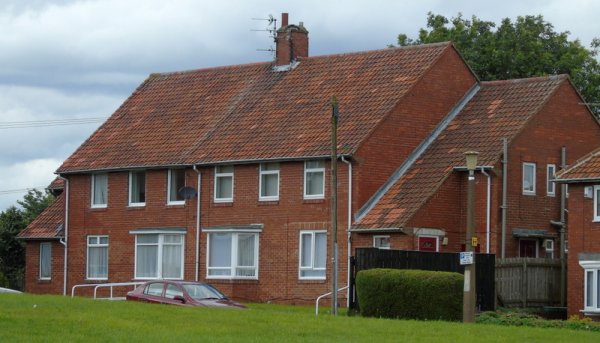Apr 26th 2023, 20:19
Blog - 26th April 2023
In this blog I consider ‘right to buy’ and the government’s decision to localise receipts; whether the government’s approach to ‘affordable housing’ is still appropriate; and the registration of new registered providers.
Since 1980, when the ‘right to buy’ was first introduced, government has taken most of the proceeds of these sales for themselves, leaving local authorities with insufficient resources to replace the social homes that have been sold. The Local Government Association, and many in the local authority housing sector, have campaigned against this and have argued that local authorities should be able to retain all of their right to buy receipts and should be able to use them to fund the building of new social homes. Finally, the Department for Levelling Up, Housing and Communities (LUHC) informed local authorities on 31st March that they would be allowed to keep all right to buy receipts for 2022/23 and 2023/24 in an attempt to boost housebuilding. Councils have five years to spend the money from receipts, including a requirement to replace any housing stock sold through right to buy.
The government also announced that it would impose a two-year freeze on the cap that prohibits councils from delivering more than 50% of replacement right to buy homes through acquisitions. The cap was previously expected to be reduced to 30% or 40%.
Right to by discounts were increased in 2012 and are now a maximum of £87,200 across England and £116,200 in London. The average discount in 2021/22 was £68,000. Just over 14,000 right to buy sales were made in 2021/22, up 52% from the previous year. According to the Local Government Association, 57,000 more social homes will be lost by 2030 because of the policy.
The Local Government Association (LGA) has welcomed the move, but has argued that the new arrangements should be made permanent.

Leeds Civic Hall
Leeds City Council, where I used to work, had 546 right to buy sales in 2021/22. They have calculated that the new policy would provide around £11.4million of additional funding, but a spokesperson told ‘inside Housing’ that:
“Due to rules surrounding the use of right to buy funds to purchase new social housing, it is estimated that the council will need to identify a further £17million of its own resource to be able to fully benefit from the temporary relaxation of the receipts policy… Work is still ongoing to determine how the additional funding can be best used.”
In the Comprehensive Spending Review of 2010 the government made a 60% cut in its affordable housing capital budgets. This included switching from funding social housing, that is let at rents determined by the social housing rent formula, to funding so-called affordable housing, that is let at rents of up to 80% of market rents. Rents in affordable housing are higher than in social housing so affordable housing can be developed with more borrowing and lower grants.
Data from the Regulator of Social Housing for 2022 shows that for general needs housing, affordable rent was on average 30% more expensive than the social rent charged by housing associations in each area. However, this masks significant variations between areas and property sizes. For example:

Council Houses in Gateshead
Since 2013, more than 257,000 affordable rent homes have been built in England, compared with just 67,000 new social rented homes. The latter have largely been built due to legacy grant programmes, local planning rules and new funding programmes in London since 2016. Meanwhile, hundreds of thousands have been lost through the Right to Buy, demolition and conversion to affordable rents when a tenancy ends. Research by the House of Commons Library in 2022 estimated that the number of social rented homes in England fell by 200,000 between 2013 and 2021. Today, funding is only available for new social homes in areas of ‘high affordability challenge’.
London Affordable Rent – a new rental product with lower benchmark rents introduced by mayor Sadiq Khan – has been counted as affordable rent in the statistics.
Charlie Trew, Head of Policy at Shelter, told ‘Inside Housing’ that:
“Because (affordable rent) is not tied to local incomes – it’s tied to market rent – many, many people can find themselves with a shortfall because they can’t afford it… Particularly if they, for example, are subject to the bedroom tax or to the benefit cap, which means they can’t claim enough housing benefit to cover their rent, they’re at the mercy of paying increasingly unaffordable rents.”
The affordable housing programme is no longer focused on those people who need the most help with housing. Instead it is focused on helping people to buy homes and on providing rented homes for those who can afford the so-called affordable housing. Meanwhile, the stock of social homes that is needed for people with the greatest housing needs is in decline, caused by the operation of the right to buy policy and the government’s decision to fund only a small number of new social homes.
This approach to affordable housing is misguided. Until the 1970s all political parties were committed to a substantial social housing programme, but since the 1980s none of them have been. The result has been too few social homes being built, too few homes in total being built, increasing house prices, increasing rents, increasing homelessness, falling levels of home-ownership and increasing expenditure on housing benefits and temporary accommodation. This has caused the current housing crisis.
If the government reversed its approach, increased investment in housing, and focused that investment on social housing, we would see the housing crisis coming to an end. At present none of the political parties is committed to this. They should all be.
Increasing numbers of local authorities are registering either themselves or their arms’ length local housing companies as registered providers with the Regulator of Social Housing. These include the new unitary councils for North Yorkshire, Somerset and Westmorland & Furness; Amber Valley, Burnley, Rushmoor and Torbay Councils; and Perran Housing LLP.
Perran Housing LLP is a Limited Liability Partnership formed to manage social, affordable & intermediate housing on behalf of Treveth Property Developers. Treveth were established by Cornwall Council in 2019 to deliver new build sustainable homes in mixed private and social communities.
I have recently published a new briefing paper ‘Introduction to Local Authority Housing Finance (capital)’. This covers the capital aspects of local authority housing finance.